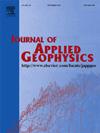Electrical resistivity tomography: A reliable tool to monitor the efficiency of different irrigation systems in horticulture field
IF 2.2
3区 地球科学
Q2 GEOSCIENCES, MULTIDISCIPLINARY
引用次数: 0
Abstract
Water management in agricultural systems is essential for optimal crop yields without incurring excessive water costs and wastage. The choice of irrigation method is crucial for better water management and distribution. The drip system appears to be among the best methods in the field of precision agriculture. In addition to the irrigation system, mulching with ridge plastic film to drain excess water is widely used to increase crop yields in terms of plant water availability. In this study, the time-lapse Electrical Resistivity Tomography (ERT), a not-invasive geophysical technique, is proposed as a simple and reliable method to evaluate the effectiveness of the irrigation systems and to monitor the changes in water content over time and over a volume of soil. ERTs data were compared to moisture ones retrieved from sensors that record continuously over time, but punctually. The ERT investigations were conducted in melon-growing lands in southern Tuscany (Italy). Measurements were carried out on two different fields in two periods: spring and summer. The aim of the work was to evaluate, by means of volumetric measures of the soil conductivity, the effectiveness of three different drip systems and of the mulch ridge. In both the monitored fields the ridge was created in a half portion of the field itself, while the other part of the land was left plat. Geoelectrical investigations associated with humidity sensors have shown that in the summer a too high mulch ridge quickly drains the irrigation water, bringing the root zone into a water deficit. The ERTs also provided good results relating to the irrigation system, demonstrating that a three-lines drip irrigation system, compared to a two-lines one, manages to distribute the irrigation water homogeneously, guaranteeing a constant water content for the plants over time.
电阻断层扫描:监测园艺领域不同灌溉系统效率的可靠工具
农业系统中的水管理对于作物获得最佳产量而又不会造成过高的水成本和水浪费至关重要。灌溉方法的选择对于更好地管理和分配水资源至关重要。滴灌系统似乎是精准农业领域的最佳方法之一。除灌溉系统外,还广泛使用塑料薄膜覆盖以排出多余水分,从而提高作物产量,增加植物水分供应。在这项研究中,提出了一种非侵入性地球物理技术--延时电阻率断层扫描(ERT),作为一种简单可靠的方法来评估灌溉系统的有效性,并监测土壤含水量随时间和体积的变化。ERT 数据与通过传感器获取的水分数据进行了比较,后者可持续记录一段时间内的水分变化。ERT 研究在意大利托斯卡纳南部的甜瓜种植地进行。测量在春季和夏季两个时期的两块不同的土地上进行。这项工作的目的是通过测量土壤导电率的体积来评估三种不同滴灌系统和地膜覆盖脊的效果。在两块受监测的田地中,地脊都是在田地本身的一半面积上铺设的,而另一部分土地则保持平整。与湿度传感器相关的地质电学研究表明,在夏季,过高的地膜覆盖会迅速排干灌溉水,使根区缺水。ERT 还提供了与灌溉系统有关的良好结果,表明三线滴灌系统与两线滴灌系统相比,能够均匀地分配灌溉水,保证植物长期保持稳定的含水量。
本文章由计算机程序翻译,如有差异,请以英文原文为准。
求助全文
约1分钟内获得全文
求助全文
来源期刊

Journal of Applied Geophysics
地学-地球科学综合
CiteScore
3.60
自引率
10.00%
发文量
274
审稿时长
4 months
期刊介绍:
The Journal of Applied Geophysics with its key objective of responding to pertinent and timely needs, places particular emphasis on methodological developments and innovative applications of geophysical techniques for addressing environmental, engineering, and hydrological problems. Related topical research in exploration geophysics and in soil and rock physics is also covered by the Journal of Applied Geophysics.
 求助内容:
求助内容: 应助结果提醒方式:
应助结果提醒方式:


